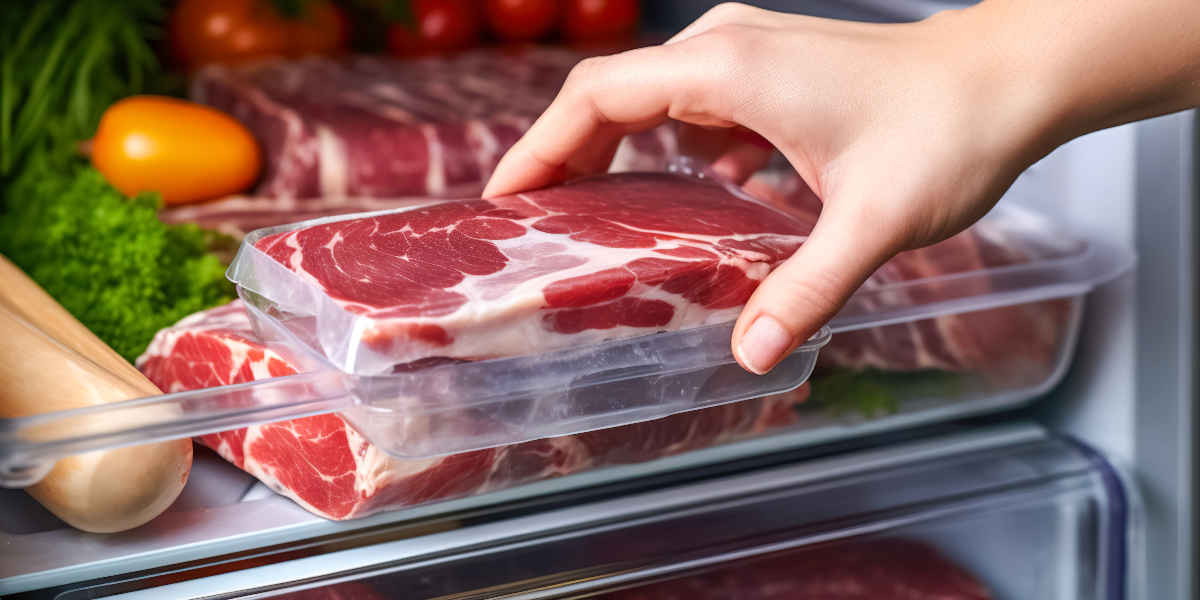A new report shows inconsistent fridge temperatures and confusing cold storage advice could be contributing to meat waste in Aussie households.
With Australian households wasting over 140,000 tonnes of meat a year, experts say there’s a growing need to understand how people are using, or not able to effectively use, their fridges to reduce meat waste.
The RMIT-led report, supported by Fight Food Waste Cooperative Research Centre and Meat and Livestock Australia, combined existing research with new in-depth interviews and observations in 20 households during warmer and cooler seasons, revealing their shopping, eating, cooking and food storage practices.
The study also monitored fridge and freezer temperatures in 56 households.
Project lead and RMIT Research Fellow, Dr Bhavna Middha, said the findings should concern Australians making an effort to save food and meat from waste due to rising grocery prices.
The research found 17% of fridges monitored were warmer or cooler than the recommended range of 2-7°C.
“When food is too warm, bacteria multiply too fast. When food is too cold, it can freeze or get freezer burn. Both conditions lead to food spoiling,” said Middha, from RMIT’s School of Global, Urban and Social Studies.
There were also inconsistent temperatures across different fridge shelves, going up to an average of 10°C and down to –1.1°C.
Almost half the freezers monitored had average temperatures outside of the optimal range.
Middha said the fluctuating temperatures could be attributed to how often the fridge was opened.
Households with children reported opening their fridge more often – even up to 20 times a day – possibly affecting the stability of fridge temperatures.
According to Food Standards Australia and New Zealand, potentially hazardous foods need to be kept at under 5°C to prevent food poisoning as these bacteria can multiply to dangerous levels between 5°C and 60°C.
Confusing advice
Factors such as confusing cold storage advice, fluctuating fridge temperatures and social pressures to over-cater at gatherings also contributed to food waste.
“Many households we interviewed said conflicting information about how long food can be kept in the fridge meant a lot of leftovers and uncooked meat was discarded just in case it was unsafe to consume,” said Middha.
“A one-stop advice platform for food storage could be a really useful tool to combat all the conflicting food storage advice that’s confusing households.”
Some households were turning to their freezers as money-saving food storage, buying meat on special with the intention to freeze to prolong shelf life.
“While it might be a great short-term option to save money and expiring meat from waste, this can lead to households buying more freezers to store bulk packs of meat, leading to excess costs and energy consumption,” said Middha.
At the same time, Middha said some households avoided freezing red meat, believing freezing affected the quality of meat as it could lead to freezer burn. They also found thawing meat inconvenient as it takes time and some expertise.
“Our research found households in general are unaware their fridges could be making their food spoil faster, especially if the fridge temperature is warmer than the standard,” said Middha.
“Most households blamed their own behaviours, such as reading the use-by date wrong, before considering their fridge might be the culprit.”
Designing solutions
With the red meat sector contributing to almost 12% of Australia’s net greenhouse gas emissions, Middha said merely informing households about food waste was not enough to bring about change.
“The burden of saving food from waste should be shared amongst policy makers, product designers, manufacturers, retailers and consumers,” she said.
“Understanding the complexities of household behaviours around food storage can help these stakeholders create better strategies and products that will help save food from waste.”
Middha said fridge designers and manufacturers have an opportunity to design and manufacture cold storage with better shelving and visibility.
“Our research found fridges and freezers were too deep, and lacked useful shelving to give the user visibility of what was being stored, which can lead to food being forgotten,” she said.
Social practices of over-catering at parties and barbeques also needed to be explored, with many households finding it challenging to store and consume leftover cold cuts and BBQ meats, said Middha.
“Maybe resealable packaging can help with storing cold cuts, but after two days in the fridge, many households said they didn’t want to eat the cold cuts for safety reasons,” she said.
“We also need more research into why we feel the need to over-cater social events in the first place and do more to challenge this.”
Something going on in your part of the region you think people should know about? Send us a news tip or email newsdesk@netimes.com.au.

